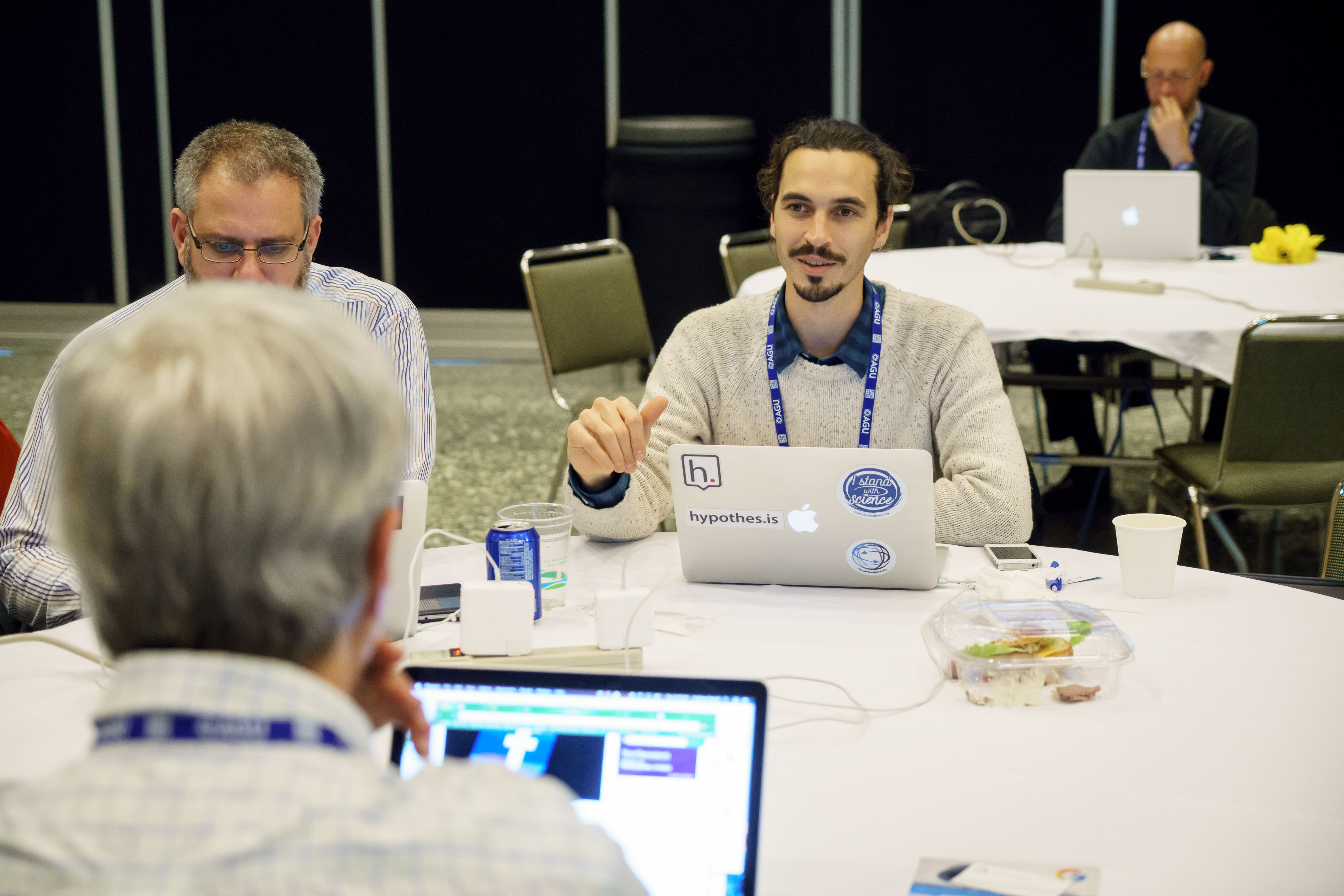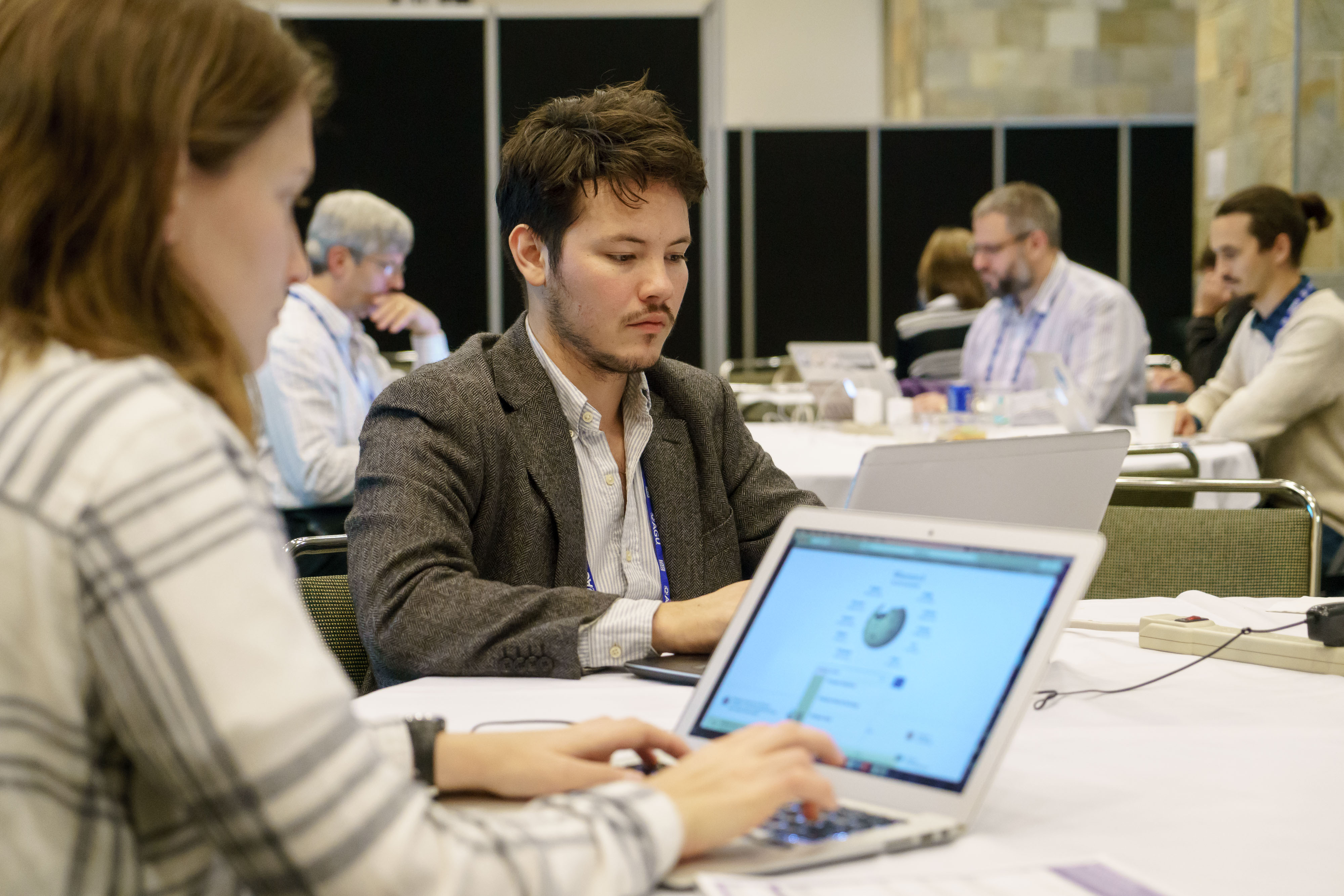23 January 2017
The Wikipedia Year of Science Comes to AGU16
Posted by Shane Hanlon

Facilitator helping fellow editors. Photo credit – Gary Wagner
By John Tracey
On a rainy day in December at AGU 2016 in San Francisco, twenty or so scientists sat in a room together to mass edit Wikipedia pages. Over the course of a few hours, 21 articles were edited and more than a thousand words were added. Thus far, the content has been viewed more than 150 thousand times.
Why bring these people together? For starters, Wikipedia is viewed 8,000 times per second. It consists of more than 37 million articles, written in more than 290 languages. By almost any measure, it’s the single largest source of information on the planet. When most people, including scientists, want to learn something about a given topic, their google search inevitably leads them to a Wikipedia entry.
This includes science topics. And while broad science content on Wikipedia can be considered reliable, the more granular, technical entries are less so. Moreover, they are often written in a way that makes it impossible for most people to digest. When it comes to gender equity, entries about female scientists are woefully underrepresented.
As such, scientists and science communicators are faced with a choice when it comes to Wikipedia – they can bemoan its ubiquity and the content and gender gaps that exist, or they can work together to fill these gaps and make Wikipedia as reliable and accurate as possible.
This was the motivation behind the Wikipedia Year of Science, an effort initiated by the nonprofit organization the Wiki Education Foundation and supported by Science Sandbox, a Simons Foundation initiative dedicated to inspiring a deeper interest in science, especially among those who don’t think of themselves as science enthusiasts.

Editing pages at AGU16. Photo credit – Gary Wagner
The gist of the campaign is very simple: college science students can be learning in interesting and promising new ways, and sharing that knowledge on Wikipedia instead of tucking it into a drawer.
To build awareness, we traveled to various science conferences across the country in 2016 hosting edit-a-thons. During these events, conference-goers spent 3 or 4 hours in a room creating new, or editing problematic science entries on Wikipedia, after receiving a brief tutorial at the beginning of the session. To sweeten the pot a little, food (and sometimes beer) was available to keep the momentum going.
For most of these events, the Wiki Education Foundation was on hand to provide information about their model, which combines university classrooms with the publishing power of Wikipedia. Students are assigned Wikipedia articles to fix and/or write, and their work is read by millions of people instead of a handful. Since the initiative launched, the program has recruited has reached more than 6,300 students at 155 universities. Students have worked on 5,530 articles, accounting for 237 million views. What’s more, 68% of student contributors are women.
While the AGU edit-a-thon was the last edit-a-thon of 2016, we plan to generate a how-to-guide for people interested in hosting their own edit-a-thons. In the meantime, check out the Wikipedia Adventure for a crash course in editing. For instructors interested in bringing Wikipedia into their classrooms, click here for more information.
–John Tracey is a Program Associate with Science Sandbox, an initiative of the Simons Foundation dedicated to engaging everyone with the process of science.










 The Plainspoken Scientist is the science communication blog of AGU’s Sharing Science program. With this blog, we wish to showcase creative and effective science communication via multiple mediums and modes.
The Plainspoken Scientist is the science communication blog of AGU’s Sharing Science program. With this blog, we wish to showcase creative and effective science communication via multiple mediums and modes.